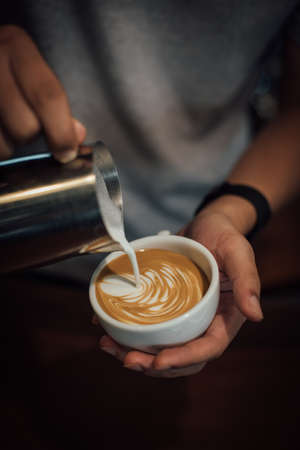Setting the Vibe: First Impressions and Ambiance
Walk into any café in the U.S., and your senses are hit with a wave of first impressions. It’s not just about the coffee—design details like lighting, color schemes, and music orchestrate the overall vibe before you even order. Soft, warm lighting instantly makes a space feel cozy and inviting, while brighter lights can energize a room for those looking to plug in and get work done. The color palette matters too; earth tones often create a sense of calm, whereas bold pops of color can spark creativity or conversation. Music plays its part as well—whether it’s smooth jazz, indie playlists, or classic rock, these sounds subtly influence whether customers linger or grab their latte to go. For American café-goers, these elements combine to form that all-important “feel” that hooks you from the get-go and keeps you coming back. It’s the intangible charm that turns a pit stop for caffeine into a cherished part of daily routine.
Layout Logic: Flow, Seating, and Accessibility
When you step into a café, the layout silently guides your experience, shaping everything from where you sit to how easily you move around. The arrangement of tables, the width of walkways, and the intentional design choices all reflect the heart and soul of a café’s brand. In America, where coffee culture is as much about community as caffeine, these details carry special weight.
The Role of Seating Arrangements
Seating isn’t just about cramming in as many chairs as possible. It’s about setting the mood—do you want to encourage long conversations or quick stops? Solo guests might prefer bar seating by a window, while groups seek out cozy nooks. The table below compares different seating styles and their impact:
| Seating Style | Best For | Atmosphere Created |
|---|---|---|
| Communal Tables | Groups, networking events | Social, energetic |
| Window Bar Stools | Solo visitors, remote workers | Open, contemplative |
| Booths or Alcoves | Couples, private chats | Intimate, cozy |
| Outdoor Patio Seating | Puppy parents, sun lovers | Relaxed, lively |
Walkways: More Than Just Aisles
The ease of movement within a café affects comfort and accessibility for everyone. Wide walkways mean that people with strollers or wheelchairs feel welcome—a crucial part of American hospitality standards. Crowded aisles can make customers feel rushed or even cause awkward moments with spilled coffee. A well-planned layout lets staff move efficiently and ensures customers can find their seat without weaving through an obstacle course.
Open vs. Cozy: What Does the Setup Say?
The spatial vibe tells guests what to expect before they even order. An open floor plan with high ceilings feels modern and social—perfect for big city cafés aiming for a vibrant buzz. On the flip side, a snug space filled with mismatched armchairs and vintage décor whispers “stay awhile”—ideal for small-town spots that thrive on regulars and slow mornings. These choices aren’t just aesthetic; they send signals about whether your café is a place to plug in and work or unplug and unwind.

3. From Decor to Details: Storytelling Through Design
Walk into any memorable café in America and you’ll instantly sense that the magic lies beyond just coffee—its in the story the space tells. Every element, from mural-covered walls to mismatched vintage chairs, is a chapter in a brand’s narrative. Artwork often reflects local culture or the owners personal journey, inviting customers to feel part of something bigger than themselves. Unique pieces—like neon signs with clever catchphrases or a bookshelf filled with dog-eared classics—spark curiosity and offer perfect backdrops for those coveted Insta-worthy moments. Even the selection of mugs, lighting fixtures, and plant arrangements are deliberate design choices that connect emotionally with guests. These details don’t just fill space; they create a vibe that lingers long after the last sip. In cities across the U.S., where every neighborhood has its own flavor, it’s these storytelling touches that set a café apart and make it a destination worth returning to again and again.
4. Welcoming Everyone: Inclusive and Community-driven Spaces
Modern American cafes are more than just places to grab a latte—they’re urban living rooms designed for everyone. Today’s coffee shops understand that building a loyal customer base means creating an environment where regulars, first-timers, families, and remote workers all feel at home. It’s not just about the menu; it’s about curating a vibe that mirrors the community and invites people from all walks of life to connect.
How Cafes Adapt for Diverse Guests
Cafes now blend design and function to accommodate different groups seamlessly. Here’s how they do it:
| Group | Design Features | Community Impact |
|---|---|---|
| Regulars | Personalized service counters, loyalty boards, familiar seating arrangements | Cultivates a “third place” feel—like a home away from home |
| Newcomers | Clear signage, open layouts, friendly staff at entry points | Makes first-timers feel instantly welcome and comfortable |
| Families | Kid-friendly zones, larger tables, accessible restrooms | Encourages parents to linger and socialize with ease |
| Remote Workers | Power outlets, quiet corners, reliable Wi-Fi, communal tables | Supports productivity while nurturing networking and collaboration |
The Local Vibe: More Than Just Coffee
The best cafes become microcosms of their neighborhoods—places where diversity is celebrated and interaction is organic. Whether it’s hosting open mic nights, featuring local artists on the walls, or organizing community events, these spaces foster belonging and spark spontaneous connections. The design choices—flexible seating, communal tables, sound-absorbing materials—play a huge role in making every guest feel included.
Why Inclusion Matters in Cafe Culture
An inclusive approach isn’t just good ethics—it’s smart business. When customers see themselves reflected in the space (from gender-neutral restrooms to menus accommodating dietary needs), they’re more likely to return and spread the word. In cities across America, the most beloved cafes are those where everyone—from stroller-pushing parents to freelance creatives—can settle in and be part of the local story.
5. Sustainability and Local Flavor
When it comes to crafting memorable café experiences, sustainability is more than just a buzzword—it’s an essential aspect of thoughtful design. Modern American coffee culture increasingly values eco-friendly choices, and today’s best cafes reflect this consciousness in their physical spaces. Picture reclaimed wood tables that tell a story, locally crafted chairs that support area artisans, or abundant greenery that softens the urban landscape. These elements aren’t just décor—they’re declarations of values.
Sustainable design goes hand-in-hand with creating a sense of place. When you walk into a café that features materials sourced from nearby forests or showcases art by neighborhood makers, you instantly feel more connected to the community. This intentional blend of eco-consciousness and local flavor transforms the space into something authentic and rooted—a far cry from generic interiors found anywhere else.
Cafes can also highlight plant-forward accents, like living walls or potted herbs, which not only purify the air but invite guests to slow down and savor their surroundings. Such details help reduce environmental impact while adding unique personality to each location. In America’s diverse cities and towns, these sustainable choices become part of a wider narrative: one where customers know their latte is served in a place that cares about its footprint and its neighbors.
6. The Ripple Effect: How Space Shapes Customer Loyalty
When you step into a café that just feels right, it’s more than the aroma of freshly brewed coffee or the playlist humming in the background—it’s a subtle harmony of design and space that invites you to linger. In American cities, where life moves fast and choices are plentiful, cafés with consistently great design and thoughtful space planning often stand out as urban sanctuaries. These spots become more than a caffeine pit stop; they morph into community living rooms, creative studios, and safe havens for reflection.
Thoughtful design—think ergonomic seating, ambient lighting, strategic layout—creates a sense of belonging. When the flow of space allows for both connection and privacy, regulars can find their favorite nook or communal table. This familiarity breeds comfort. Customers start to associate their positive moods and productive afternoons with the physical space itself.
Cafés that nail this balance don’t just get repeat business—they inspire loyalty. People return not only for the coffee but for the experience: the way sunlight hits the window seat in late afternoon, how a well-placed plant softens city noise, or how baristas remember their names. Over time, these details ripple outward, turning casual visits into rituals and visitors into true café regulars.
In essence, when design and space planning are approached with genuine care for the customer journey, the effects extend far beyond aesthetics. They weave into daily routines and city life. A thoughtfully designed café becomes part of someone’s story—where friendships spark, ideas form, and everyday moments become memorable. That’s the real magic behind customer loyalty in America’s best-loved cafés.

